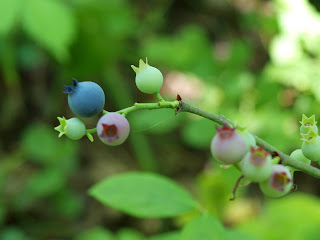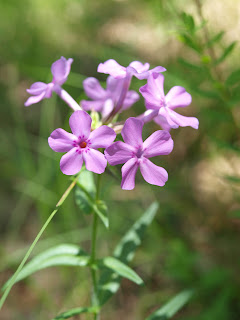The Wednesday Seedpickers met at Somme Prairie Nature Preserve this week. The flora was less than inspiring this week--thank you, Mr. Drought. The leadplant was not ready to pick, and as that had been our main target, we wandered around pretty aimlessly until we found some prairie brome and slender wheatgrass, the sexy and trim Agropyron trachycaulum. No photos, alas.
And a dragonfly sat still long enough for me to snap a few pix (I haven't been foiled enough times to get it through my skull that I need a much longer lens for dragonflies, because my lumbering Amazon giantess-ness always scares them away). I am terrible with dragonflies, and am too lazy to buy a field guide and/or click on all the photo links on the Illinois dragonfly websites. I could use some help from my loyal readership--recommendations for field guides, or for good websites that show all the photos side by side so I don't have to click on every species? My best uneducated guess is Halloween pennant:
Then on Friday, I did a solo Botany Bender in the Palos region. I hit up Spears Woods, Paw Paw Woods, and Palos Fen, the latter two of which are Illinois Nature Preserves, thus bringing my total to 38 (had to add one when I realized that LeRoy Oakes is the same place as Horlock Hill Prairie). Spears was OK; I finally got my elusive shots of woodland sunflower, at least. Elusive because it's one of the only species of interest in the woods in July, which is why I never GO to the woods in July...
The prairie areas were pretty standard, and suffering from the drought as everyone else. The Liatris spicata seems to be taking the drought pretty hard; they all look weird and stunted:
When I see this last one, I hear a descending BEEEEEeeeeewwwwwwwww sound, the sound of something drooping.
Then, on to Paw Paw Woods. The literature is very evasive when it comes to this preserve. All I could gather was that there is no parking for it, but there are developed trails. OoooooooK. After driving all the way around it, one hand on the steering wheel and the other scratching my head, I spied the trailhead--across from the Maple Lake Overlook parking lot (no parking my ass), marked by one of those yellow signs that says "No Bike or Horse Traffic" or something to that effect (which apparently didn't deter the two douchebag mountain bikers I encountered in there, or the dozens before them, judging by the trail condition). I liked this place--it was stupid to go to the woods in summer from a botany perspective, I'll admit, but at least it was a good hike. Respectable topography for the Chicago region, and a nice winding loop trail that took me about half an hour at a leisurely pace. It would be lovely in the spring, and with a guide who knows his/her oaks; according to the writeup, there are chinquapin and shingle oaks, but as there were few juveniles, and a multitude of young sugar maples, I didn't spy any. My two interesting finds were a patch of Asclepias exaltata, with their enthusiastic seedpods:
Boi-oi-oing! And patches of spicebush, who have apparently given up all hope this year and aborted their fruits:
This made me unreasonably somber. Then I headed over to Palos Fen Nature Preserve. The botany snob in me was not impressed. I had been lured by the description in the INPC guide, which indicated that queen-of-the-prairie is a resident at this site. Instead, it was a mess of cattail and reed canary grass, with a few patches of low-quality natives hanging on for dear life--rice cut grass, spotted Joe-Pye, blue vervain, and water pepper. Maybe I just didn't go far enough in. Got some good shots though:
I love spotted Joe-Pye's spots...they're so dainty.
I have a soft spot for blue vervain...understated and very content with itself.
And I could use some help with this handsome little guy:
And that concluded my outing. One final semi-nature-related observation on the day, from the drive home: The Des Plaines River/Ship & Sanitary Canal complex near 1st Avenue has smelled like Death (with a capital D) for over a week now. And I mean, worse than your average Death. It usually smells bad, but this is a whole new category of bad. It's not right. By the hammer of Thor, what are they doing over there lately???































